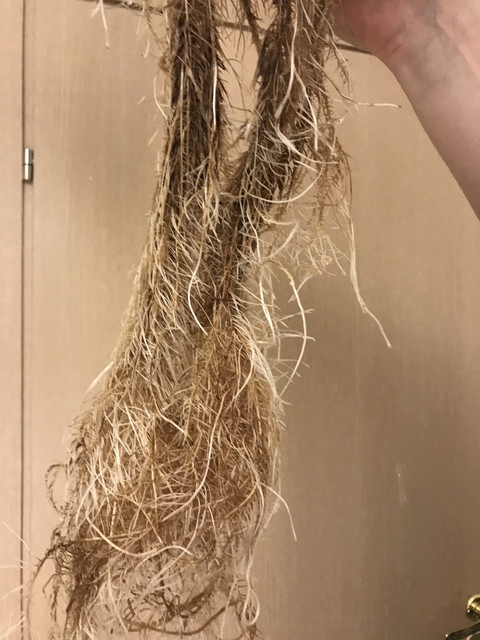Is this Root rot?
- Thread starter AngryMexican
- Start date
Budley Doright
Well-Known Member
Maybe I'm missing something as well but is there not less root mass in the latest pics? Sorry if I misdiagnosed  but they really don't look that healthy to me.
but they really don't look that healthy to me.
AngryMexican
Active Member
I disagree, respectfully lol notice no caps or bold letters .... jeesh. Would not the clumping indicate root issues? Anyways good luck op. Hope it goes away.

I think you mean this plant? I'll check it out and take a new picture today, it looks strange to me too
No, root mass increased...Maybe I'm missing something as well but is there not less root mass in the latest pics? Sorry if I misdiagnosedbut they really don't look that healthy to me.
No, but Uptake by Cyco nutrients and B-52 by AN are dark as hell.You’re using Voodoo Juice? Is that brown?
Could be Hydroton dust.
Stick to clear stuff.
Budley Doright
Well-Known Member
Again sorry if I miss diagnosed but I'm still leaning towards something other than staining. One thing is if it is in fact staining, I would ask why is half the roots in one plant whitish and the other dark brown and clumping? Perhaps others could answer that re staining.
Dr. Who
Well-Known Member
Yes, they will be fine that way! You're not adding back too much nutrient that way, or causing an imbalance by plants using more of one over another...First of all thanks a lot, but sorry I am kind of slow and my english sucks
So if I got it right...
... FIRSTLY I do put about 16 gal of 100% nutrient solution (almost to the bottom of net pots)
and afterwards I just add 33% solution little by little till I reach that 16 gal total amount. => Dump and all over again
But is it ok if this process takes more than two weeks? Because I am not sure if 2 plants can drink more than 16 gal in 2 weeks...
Dr. Who
Well-Known Member
You have every right to disagree. Everyone does......Now on to the answer.Again sorry if I miss diagnosed but I'm still leaning towards something other than staining. One thing is if it is in fact staining, I would ask why is half the roots in one plant whitish and the other dark brown and clumping? Perhaps others could answer that re staining.
The amount of staining varies due to the variable amount of cellulose fiber that the roots are "shedding". This is due to root mass per root and other variables of root growth and age....Other things too.
The staining will be more present on roots with that cellulose being shed then those that have shed it. Think of roots like a snake. As they grow, they shed their "skin" to keep growing....
Any bottled "zyme" product is a specific "group" of living bio's that actually do the consuming of that shed "skin." And the brown staining is the "basically" still being consumed version of that cellulose fiber.
This staining is partly due to the chemical compounds in the nutrient line, Reacting to the whole process of growing...
There are nutrient lines that basically do not have that "browning" effect.
The brown waste material that collects on the bottom of any container in the hydro system. Is that consumed cellulose fibers.....
Lastly. If it was root rot. His plants would be in bad shape. Drooping and weak, with imbalances showing. Some looking like pH issues too.
Some can hit so fast that they looked good one day and the next they're completely drooped and looking like they have dried out in soil and need watering.
That type is a sure sign of res temps over 70 deg F....
That help Budley?
Dr. Who
Well-Known Member
Different plants.....go back and look again....Maybe I'm missing something as well but is there not less root mass in the latest pics? Sorry if I misdiagnosedbut they really don't look that healthy to me.
AngryMexican
Active Member
Man, I have no wordsYou have every right to disagree. Everyone does......Now on to the answer.
The amount of staining varies due to the variable amount of cellulose fiber that the roots are "shedding". This is due to root mass per root and other variables of root growth and age....Other things too.
The staining will be more present on roots with that cellulose being shed then those that have shed it. Think of roots like a snake. As they grow, they shed their "skin" to keep growing....
Any bottled "zyme" product is a specific "group" of living bio's that actually do the consuming of that shed "skin." And the brown staining is the "basically" still being consumed version of that cellulose fiber.
This staining is partly due to the chemical compounds in the nutrient line, Reacting to the whole process of growing...
There are nutrient lines that basically do not have that "browning" effect.
The brown waste material that collects on the bottom of any container in the hydro system. Is that consumed cellulose fibers.....
Lastly. If it was root rot. His plants would be in bad shape. Drooping and weak, with imbalances showing. Some looking like pH issues too.
Some can hit so fast that they looked good one day and the next they're completely drooped and looking like they have dried out in soil and need watering.
That type is a sure sign of res temps over 70 deg F....
That help Budley?
AngryMexican
Active Member
Here is the same plant...Again sorry if I miss diagnosed but I'm still leaning towards something other than staining. One thing is if it is in fact staining, I would ask why is half the roots in one plant whitish and the other dark brown and clumping? Perhaps others could answer that re staining.
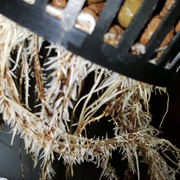
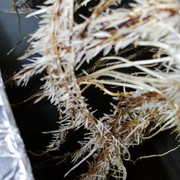

The plants look absolutely awesome, gonna become trees soon =D
And here are diff plants, fresh photos

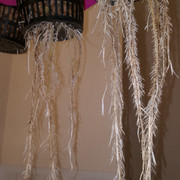

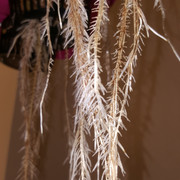

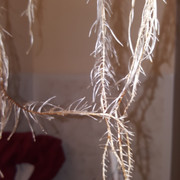
AngryMexican
Active Member
Maybe... But I am absolutely sure that they did not smell whole timeAlmost looks like you had a root issue but they corrected it and are re growing
This one is 2 weeks old seedling which was in rooting cube what was fully covered with green algae, I stick it on the border of the net pot in hydroton and here it is
This plant looks really pale, like nitrogen or iron deficiency


Last edited:
AngryMexican
Active Member
Right now I refilled all of containers with 16 gal of fresh solution till the bottom of the net pot.
AngryMexican
Active Member
They did not get soft and mushy also I thinkI dont think all root issues smell
But i could be wrong if they ever get soft and mushy its also a sign
Budley Doright
Well-Known Member
Why yes it does, and no caps or bolds, must be a good day huh doc lolYou have every right to disagree. Everyone does......Now on to the answer.
The amount of staining varies due to the variable amount of cellulose fiber that the roots are "shedding". This is due to root mass per root and other variables of root growth and age....Other things too.
The staining will be more present on roots with that cellulose being shed then those that have shed it. Think of roots like a snake. As they grow, they shed their "skin" to keep growing....
Any bottled "zyme" product is a specific "group" of living bio's that actually do the consuming of that shed "skin." And the brown staining is the "basically" still being consumed version of that cellulose fiber.
This staining is partly due to the chemical compounds in the nutrient line, Reacting to the whole process of growing...
There are nutrient lines that basically do not have that "browning" effect.
The brown waste material that collects on the bottom of any container in the hydro system. Is that consumed cellulose fibers.....
Lastly. If it was root rot. His plants would be in bad shape. Drooping and weak, with imbalances showing. Some looking like pH issues too.
Some can hit so fast that they looked good one day and the next they're completely drooped and looking like they have dried out in soil and need watering.
That type is a sure sign of res temps over 70 deg F....
That help Budley?
Last edited:
Dr. Who
Well-Known Member
Thank you! Been around a bit.Man, I have no words, you must have horticulture degree or something... Great to hear opinions from people like you! Thank you very much man!!!
churchhaze
Well-Known Member
What I don't understand is why people make hydro nutes that stain.
The only salt I have that's not white is Iron DTPA, which is orange, makes the stock solution it goes in orange, but does not stain roots when diluted in the reservoir.
What the hell are people putting in their hydro bottles these days? Brown paint? Useless organic additives like amino acids and fulvic acid.
The only salt I have that's not white is Iron DTPA, which is orange, makes the stock solution it goes in orange, but does not stain roots when diluted in the reservoir.
What the hell are people putting in their hydro bottles these days? Brown paint? Useless organic additives like amino acids and fulvic acid.
AngryMexican
Active Member
Could tap water cause root rot? Or nutrients that have been frozen (I kept them in garage over night)?



